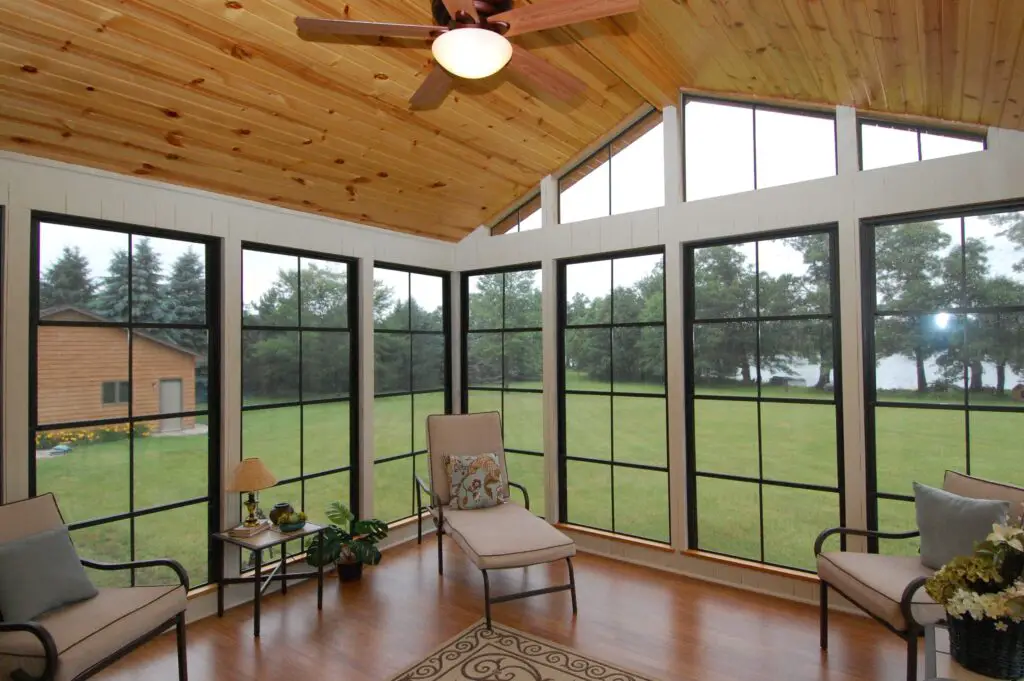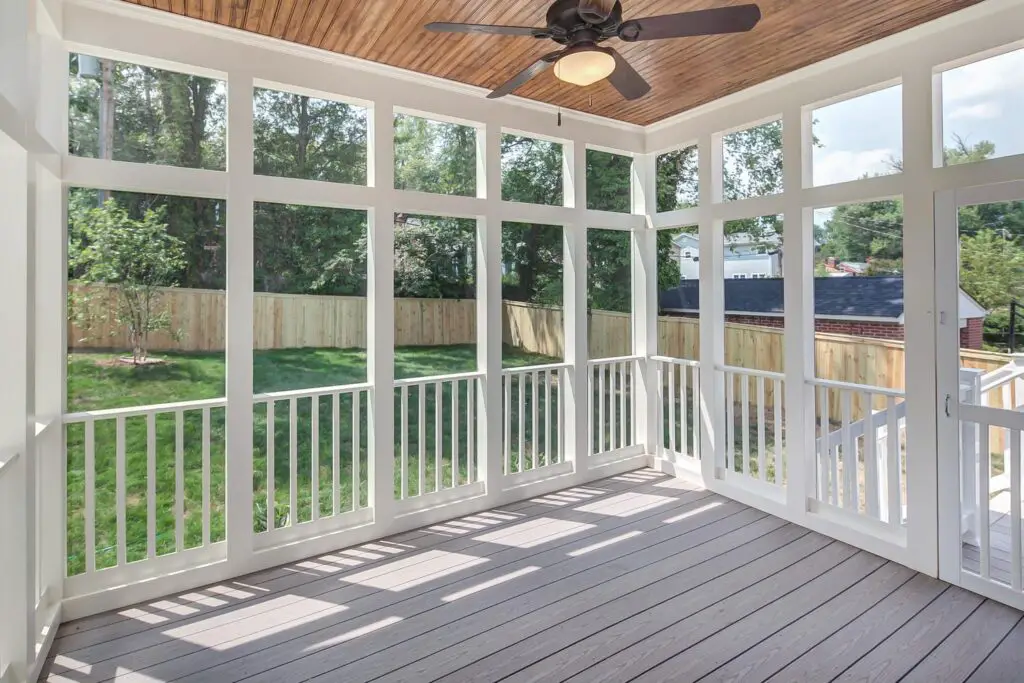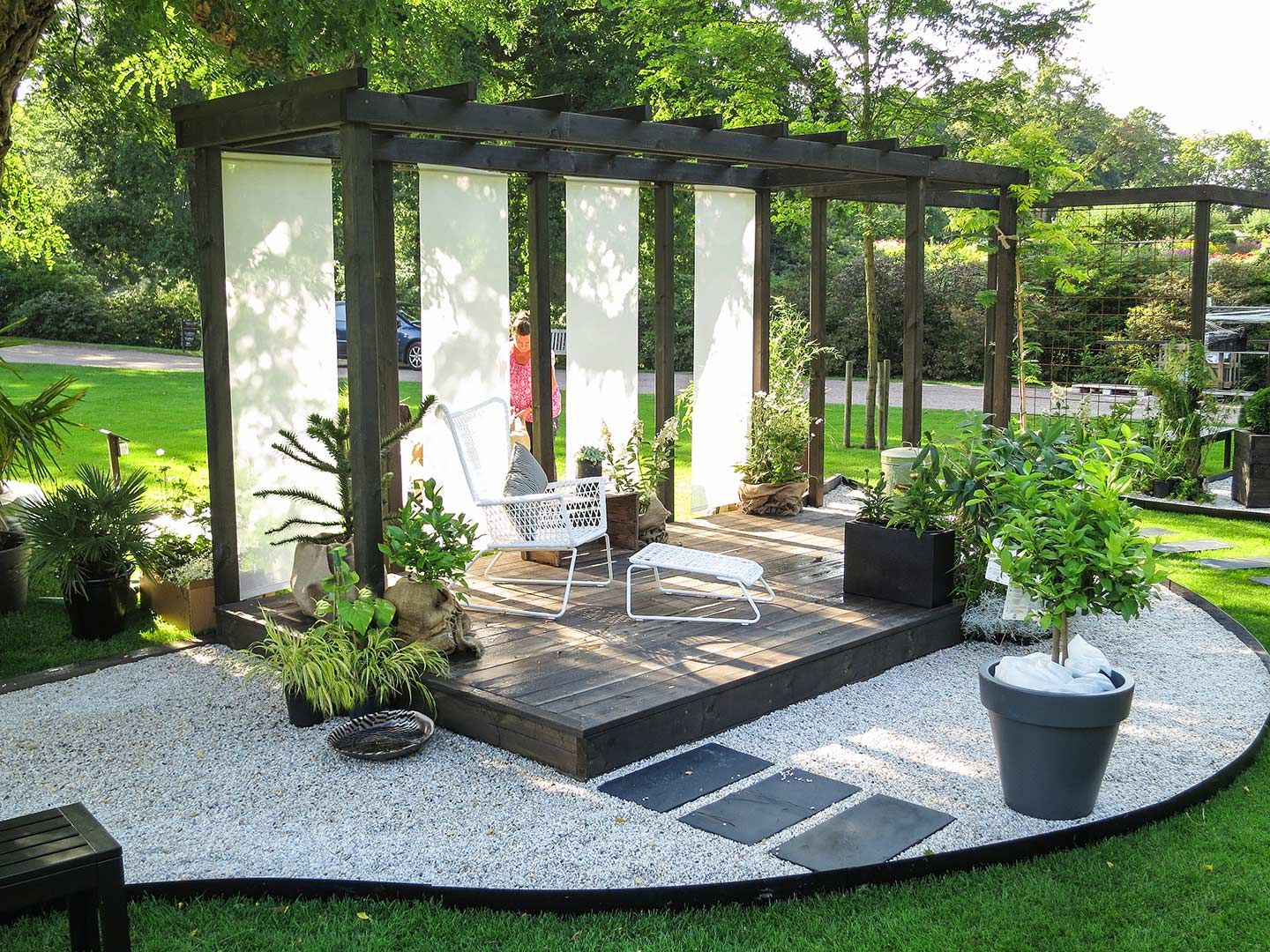How Much To Screen In A Patio
Introduction
How Much To Screen In A Patio: To truly unlock its full potential, one crucial consideration arises: how much to screen in your patio. Screened patios offer a myriad of advantages that can enhance your outdoor experience in ways you never imagined. First and foremost, screening in your patio provides a barrier against unwanted pests. No more swatting away pesky mosquitoes or shooing flies while trying to enjoy a meal or unwind with a book. The screens act as a protective shield, allowing you to savor every moment of your outdoor retreat without any disturbance.
Moreover, a screened patio grants you the luxury of enjoying the great outdoors year-round, regardless of the weather. Embrace the gentle breeze on a warm summer’s day, listen to the gentle patter of raindrops during a summer shower, or relish the crisp autumn air without worrying about getting soaked or bitten by insects. Privacy is yet another invaluable benefit that comes with screening in your patio. Whether you live in a bustling neighborhood or in a more secluded area, having a private outdoor space ensures you can fully relax and unwind without feeling exposed to prying eyes.
Some may opt for a fully enclosed and protected space, while others might prefer a partial screening, striking a balance between openness and seclusion. There’s no one-size-fits-all answer, and that’s the beauty of it—you get to design a cheap patio that reflects your unique style and lifestyle. From the different types of screens available to the design options that can elevate your outdoor space, we’ll help you create a haven that perfectly complements your vision.

How much does it cost to charge a screen in a patio?
The national average cost to screen a 200-square-foot existing porch is about $2,085. Most homeowners typically pay between $1,680 to $2,490.
The size of your patio is the most significant determinant of the cost. Naturally, the larger the patio, the more materials will be required to screen it in. Contractors often charge per square foot for labor and materials, so a larger patio will result in higher overall costs. Accurately measuring the dimensions of your patio will help you estimate the total expense more effectively.
Type of Screening Material
The type of screening material you choose also plays a crucial role in the overall cost. There are various options available, such as traditional fiberglass screens, pet-resistant screens, solar screens, and even motorized retractable screens. Each material comes with its unique features and price points. While traditional fiberglass screens are more budget-friendly, specialized screens like pet-resistant or solar screens may incur additional costs.
Screen Frame and Construction
The framework used to hold the screens in place is another cost consideration. Patio screens can be framed with wood, aluminum, or vinyl. Wood frames are aesthetically pleasing but may require more maintenance. Aluminum frames are durable and low-maintenance, while vinyl frames are affordable and resistant to weather damage. The type of frame you choose will influence the overall cost.
Labor Costs
Labor costs for screening in a patio can vary based on your location, local labor rates, and the complexity of the project. Hiring a professional contractor ensures a high-quality and precise installation. Some homeowners may choose to take the DIY route to save on labor expenses, but it’s crucial to have the necessary skills and tools to ensure a successful outcome.
What is cheapest way to screen in patio?
Fiberglass screen is the common choice for porches because it is less expensive than aluminum screen. It is easier to install because of its flexibility and doesn’t crease like metal screen mesh is prone to do.
Among the most affordable options, traditional fiberglass screens are widely available and budget-friendly. They offer effective insect protection and allow air to circulate freely, creating a comfortable outdoor environment. Fiberglass screens are easy to install and come in various sizes, making them suitable for most patio configurations.
Consider purchasing a pre-packaged screen kit, which often includes all the necessary materials and hardware for installation. These kits come in different sizes and styles, making it convenient to find one that fits your patio’s dimensions. With clear instructions and basic tools, you can save on labor costs by assembling the screen yourself.
It needs basic carpentry skills and tools, but you can control material quality and pricing. Buy frames, spline, and screen material from your local hardware shop or online and build the enclosure at your own time.
Building frames using pressure-treated lumber can save money if you’re on a budget. Although wood requires more maintenance than other materials, its raw and rustic aesthetic complements many architectural types.
How long do patio screens last?
Without considering materials, age, and quality of frame and screen, the average estimates screened porches survive six to eight years before needing repair.
Patio screen longevity depends on screen material. Traditional fiberglass screens, which are cheap and widely used, last 5–10 years. However, metal and pet-resistant screens can last 10–15 years or more.
More patio use and screen openings and closings will wear them out.
Regular maintenance is crucial for extending the lifespan of patio screens. Cleaning the screens periodically, removing debris, and addressing any minor damages promptly can significantly increase their longevity. Neglecting maintenance can lead to the accumulation of dirt and grime, which can weaken the screen material over time.
The climate and environmental conditions in which the patio is situated also play a vital role. Harsh weather elements like strong winds, heavy rain, extreme temperatures, and exposure to direct sunlight can deteriorate screen materials faster. Patios in coastal areas may be exposed to salt spray, which can accelerate corrosion in certain types of screens.
What type of patio screen is best?
For your patio screen, you need a material that’s not easily damaged by humidity or salty air. Brass is a great option. Cost – Fiberglass and aluminum are the best screening materials options if you are operating on a tight budget. Copper is a more expensive option.
They may wear out faster and be more susceptible to pet and child damage than other materials.
Aluminum screens are long-lasting and weatherproof, making them ideal for homeowners. They resist rust and corrosion, making them ideal for coastal or wet settings. Aluminum screens cost more than fiberglass, but their durability and cheap maintenance make them a good long-term investment.
If you have pets, choose pet-resistant screens. These heavy-duty screens resist tearing and damage from pets’ claws and playfulness. They cost more, but they last longer and require fewer replacements.
Hot regions and areas with significant sun exposure benefit from solar screens, which block sunlight and limit heat transfer.
What color patio screen is best?
The most popular colors are Bronze and Charcoal. These darker colors absorb more light and will allow better visibility through the closed fabric screen to the outside. This is important if you desire to have a nice view of the exterior through the screen fabric when it is extended.
Charcoal or black patio screens are a popular choice for many homeowners due to their sleek and modern appearance. These darker colors offer excellent visibility from the inside, allowing you to enjoy the view of your outdoor space without obstruction. Additionally, black or charcoal screens can create a sense of depth and add a touch of sophistication to your patio.
From a functional standpoint, darker screens tend to absorb more sunlight, making them ideal for cooler climates or areas where you want to retain heat. However, in hot and sunny regions, darker screens may absorb too much heat, leading to potential discomfort when sitting near them during the day.
Gray patio screens strike a balance between the light and dark color spectrum, offering versatility and practicality. Gray screens can complement various architectural styles and outdoor decors. They provide a clean and contemporary look while still maintaining good visibility from both inside and outside the patio.
Gray screens are well-suited for moderate climates where temperature fluctuations are not extreme. They can help diffuse sunlight, reducing glare and heat without absorbing as much warmth as darker screens.
Beige or tan screens are suitable for areas with hot and sunny climates, as they reflect sunlight more effectively than darker screens, helping to keep the patio cooler during the day.

What is a screen patio called?
What is a lanai? A lanai is a combination of a patio and a veranda or porch. Typically, it has a roof and is included in the house’s floor plan. A lanai features a solid floor, usually made of concrete, enclosed with glass or screening.
Screen patios come in various designs and configurations, depending on the layout and architecture of the home, as well as the preferences of the homeowner. Some screen patios are designed as standalone structures, while others are integrated into the existing structure of the house as a screened-in porch.
The screens can be framed with materials like wood, aluminum, or vinyl, and the screening itself may vary in terms of material and durability based on the desired functionality and aesthetics.
Screen patios offer a wide range of customization options to suit different styles and preferences. Homeowners can choose from various screen materials, frame colors, door styles, and even additional features like integrated lighting or motorized retractable screens for added convenience.
A screen patio is a covered outdoor area that is enclosed with screens on its walls and sometimes on its ceiling as well. The screens are typically made of materials like fiberglass, aluminum, or specialized pet-resistant screens, depending on the homeowner’s preferences and needs.
The main purpose of a screen patio is to keep insects, such as mosquitoes, flies, and other pests, out while still allowing fresh air and natural light to flow in.
A screen patio, also known as a screened-in patio or screened porch, is an outdoor living space that offers a seamless blend of indoor comfort and the beauty of the outdoors. It provides insect protection, increased comfort, extended usability, improved airflow, privacy, and versatility for various activities.
How long does it take to install a patio screen?
On average, the time it takes to install a single retractable patio screen is 2 hours. Projects involving more than one retractable patio screen can typically be installed within 1 day.
Before any installation work begins, there is typically a planning phase. During this stage, the homeowner or the installation team will assess the patio’s size, design requirements, and the type of screen material to be used. The installation team may take measurements, discuss customization options, and plan for any additional features like doors or lighting.
The time required to acquire the necessary materials and permits can influence the overall installation timeline. If the required materials are readily available, this step should not take long. However, obtaining permits from local authorities, if required in your area, may take additional time, depending on the local regulations and processing times.
Once the planning is complete and materials are ready, the installation team will begin the physical work on-site. They will prepare the area by clearing any obstacles and laying the foundation for the screen patio. This may involve constructing or reinforcing the framing, which could take a day or more, depending on the complexity of the design.
The actual screen installation is a crucial step that involves fitting the screens into the frames and securing them in place. The time required for this stage will depend on the size of the patio and the type of screen material being used. For example, installing traditional fiberglass screens may be relatively faster compared to more intricate or specialized screen materials.
How do you fix a screen on a patio?
- Step 1 Screen.
- Lay the door on a hard surface.
- Remove spline by using an awl or pointed object.
- Remove the old screen fabric from the frame.
- Lay new screen on opening.
- Cut screen to a manageable size.
- Tape or secure screen to prevent movement during spline installation.
If you are replacing the entire screen, use the old screen as a template to cut the replacement material to the appropriate size. Make sure to leave some extra material on all sides to ensure a proper fit.
Lay the replacement screen material over the frame, ensuring it covers the entire opening. Use a spline roller or spline installation tool to press the screen into the groove along one side of the frame. Continue pressing the screen into the groove along all sides until it is securely held in place.
Once the screen is in place, insert the spline back into the groove to hold the screen securely. Use the spline roller or spline installation tool to push the spline firmly into the groove, ensuring it holds the screen taut.
Carefully trim any excess screen material from the edges using a utility knife or scissors.
For minor tears or holes in the screen, you can use a screen patch kit. These kits usually include adhesive patches that can be applied directly over the damaged area to reinforce the screen.

Conclusion
By choosing to screen in your patio, you open the door to a world of relaxation, privacy, and protection against pesky pests. It allows you to fully embrace the beauty of nature while remaining shielded from its inconveniences, such as bugs and inclement weather. Whether you envision a fully enclosed retreat or a partially screened haven, the level of screening you choose depends on your individual preferences and requirements. Take the time to explore various design options, consult with professionals, and most importantly, trust your instincts.
Consider the layout of your outdoor space, your climate, and the primary purpose of your patio when making this decision. A fully screened patio may be ideal for those seeking complete privacy and protection, while a partially screened one can strike a balance between open-air freedom and enclosed comfort. Additionally, think about the aesthetic aspects and how the screening will complement the overall porch cost design of your home. Your screened patio will become a personal oasis, reflecting your unique taste and providing countless moments of joy and tranquility for you, your family, and your friends.
Ultimately, the key is to create a patio that aligns with your lifestyle and enhances your enjoyment of outdoor living. With the right level of screening, you can unlock the full potential of your patio, turning it into an inviting extension of your home where you can relax, entertain, and connect with nature. As you embark on this journey of transforming your patio, remember that there is no one-size-fits-all answer.








